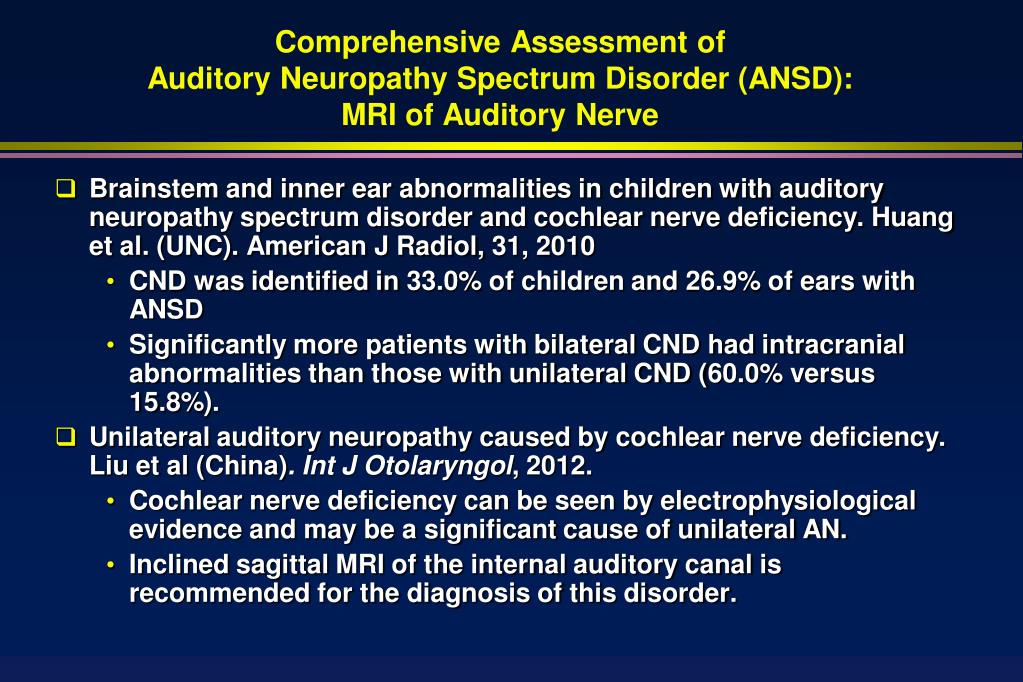
Therefore, the present study attempts to evaluate the results of the DHI in adolescents and adults with ANSD. It has three subscales (functional, emotional and physical) that assess the deterioration of quality of life in individuals with balance problems. The dizziness handicap inventory (DHI) is a 25-item questionnaire used to determine the dizziness-related handicap. Hence, it is essential to understand the effect of vertigo/dizziness on the quality of life of individuals with ANSD.

The focus of the assessment and audiological rehabilitation of ANSD patients has always been on the auditory symptoms, and the vestibular symptoms are usually ignored. However, considering all these important test findings, most of the studies have not given the proper importance to the assessment of the dizziness handicap in individuals with this disease. This suggested the involvement of both the inferior and superior vestibular nerves in such individuals. Showed that VEMPs were absent, and caloric tests showed hypofunctional responses in individuals with ANSD. Reported that cervical and ocular vestibular-evoked myogenic potentials (VEMPs) were abnormal in individuals with ANSD. Reported that isolated auditory neuropathy or vestibular neuropathy are rare and the most common pathology is “audio-vestibular neuropathy,” affecting both branches of the eighth cranial nerve. The involvement of the vestibular branch in ANSD is extensively reported in the literature. These individuals also exhibit vestibular neuropathy along with auditory difficulties.Īuditory neuropathy spectrum disorder is a retrocochlear disorder affecting the vestibulocochlear nerve that can lead to auditory and vestibular symptoms. Vertigo is also one of the symptoms reported by individuals with ANSD. Auditory neuropathy spectrum disorder is a retrocochlear disorder that affects the communication abilities of those diagnosed with it because of their poor speech perception. Reported that, among individuals with sensorineural hearing loss, 1 in 183 were diagnosed with ANSD. In the Indian population, Kumar and Jayaram The prevalence rate of ANSD in Western countries is reported to vary from 11 to 0.5%. Appropriate management strategies should be considered to resolve their vestibular problems and improve their quality of life.Īuditory neuropathy spectrum disorder (ANSD) can be defined as a clinical disorder in which individuals have normal otoacoustic emissions (OAEs), and the auditory brainstem response (ABR) is abnormal or absent. Thus, a detailed assessment of vestibular problems and their impact on quality of life is essential in adolescents and adults with ANSD.

There could be a vestibular compensation that could have resulted in a reduction in symptoms in individuals in whom the onset of the hearing loss was reported later on. There was no gender effect, and the level of the handicap was greater in the cases in which the onset of the hearing loss was reported soon after the diagnosis of ANSD. The dizziness affected their quality of life, causing emotional problems. The results of the study showed that adolescents and adults with ANSD had a moderate degree of dizziness-related handicap. The study also attempted to determine if there is any gender effect on DHI scores and its correlation to the reported onset of hearing loss.

The dizziness handicap inventory (DHI) was administered to 40 adolescents and adults diagnosed with ANSD. The present study attempted to evaluate the dizziness-related handicap in adolescents and adults with ANSD. However, the real life handicap caused by these vestibular problems in individuals with ANSD is not studied. Vestibular symptoms and damage to the vestibular branch of the eighth cranial nerve is reported in individuals with auditory neuropathy spectrum disorder (ANSD).


 0 kommentar(er)
0 kommentar(er)
